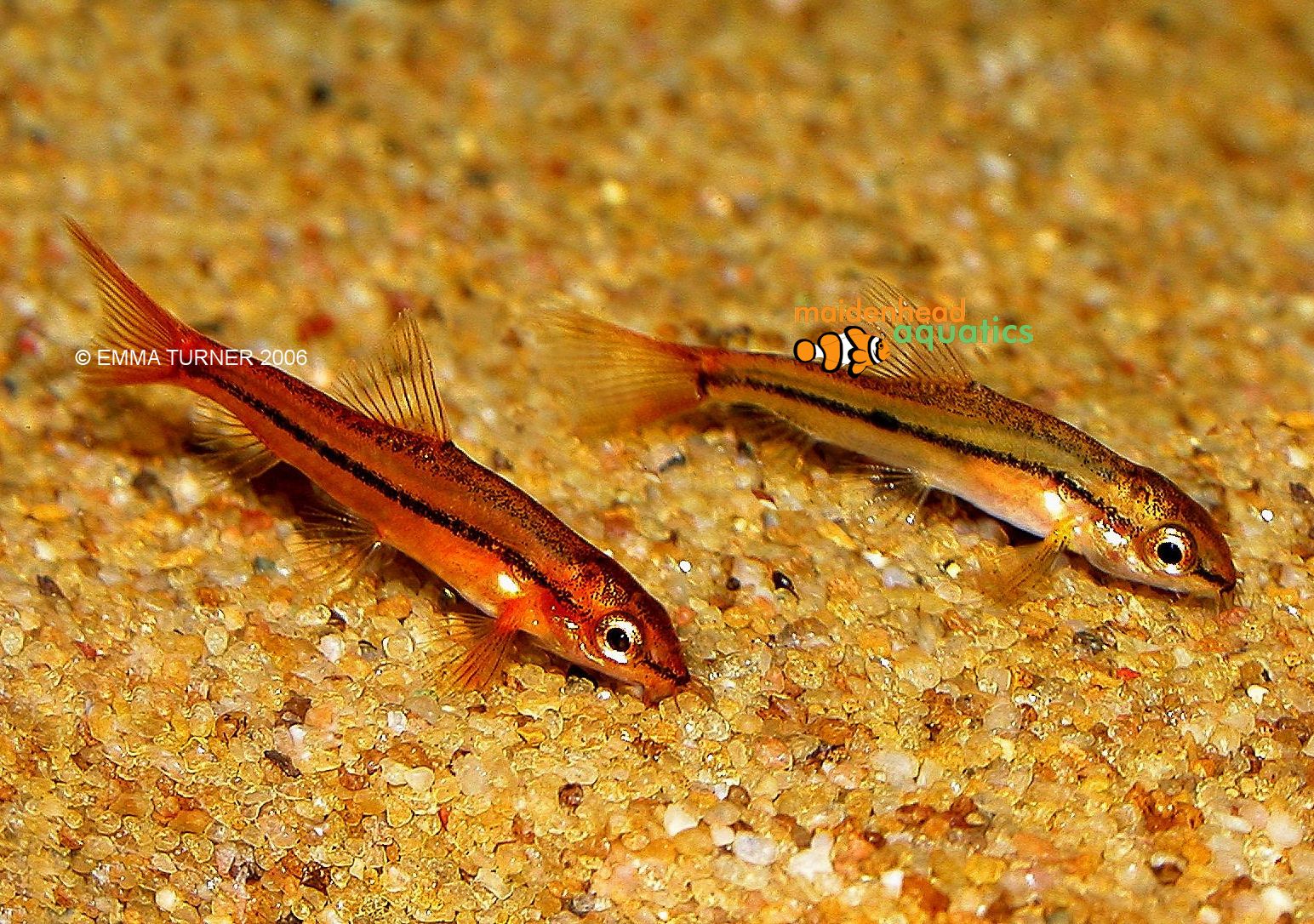Beastije
Fish Addict
So, I have had my mango loaches since beginning of February, so 5 months
Given their size I can assume they are adult, hard to say, didn't find the info on their maturity.
However their color dimorphism is very clear, the males are super orange almost bronze, the females are beige/yellowish with spot patterns. They are absolutely Impossible for me to photograph well given how active they are.
I only have seven and as everyone in the hobby, have more males than females. I think I have two females.
I managed to catch four in the morning, the lovelies just swam into my glass beaker, they are so curious. Two males, two females. But for how long should I leave them there so they can attempt to breed, but so they dont eat all the eggs? 24 hours? More? I dont want to stress them by moving there and back and there and back.
The box is an IKEA 10l box, full of hornwort and java moss, a sponge filter. It has some ramshorns, one shrimp and was setup months ago as a plant leftover. No substrate and I vacuumed all gunk out when I cleaned it out over weekend. Is this a suitable test?
Pictures of the main tank

the box


Maybe overall tips o how to breed egg scattering fish with no parental care, maybe I should try to get some mesh? but I heard their eggs are sticky and in plants, so not sure...
Given their size I can assume they are adult, hard to say, didn't find the info on their maturity.
However their color dimorphism is very clear, the males are super orange almost bronze, the females are beige/yellowish with spot patterns. They are absolutely Impossible for me to photograph well given how active they are.
I only have seven and as everyone in the hobby, have more males than females. I think I have two females.
I managed to catch four in the morning, the lovelies just swam into my glass beaker, they are so curious. Two males, two females. But for how long should I leave them there so they can attempt to breed, but so they dont eat all the eggs? 24 hours? More? I dont want to stress them by moving there and back and there and back.
The box is an IKEA 10l box, full of hornwort and java moss, a sponge filter. It has some ramshorns, one shrimp and was setup months ago as a plant leftover. No substrate and I vacuumed all gunk out when I cleaned it out over weekend. Is this a suitable test?
Pictures of the main tank
the box
Maybe overall tips o how to breed egg scattering fish with no parental care, maybe I should try to get some mesh? but I heard their eggs are sticky and in plants, so not sure...


